Scrub Hub: How does road salt affect the environment, and how does Indy reduce harm?
It’s that time of year when snow, ice and wintry mix are regulars on the Indiana forecast. And with that, snow plows and salt trucks are often standing at the ready.
Nearly three-quarters of the U.S. population lives in a region that experiences snow and ice, and pouring many tons of salt on roads does make driving in the winters more safe. Research shows that use of road salt can decrease car wrecks by more than 78%.
That’s not all that these salts do, however – a growing body of research is raising questions about whether road salts are safe for the environment and public health. Some IndyStar readers have similar questions.
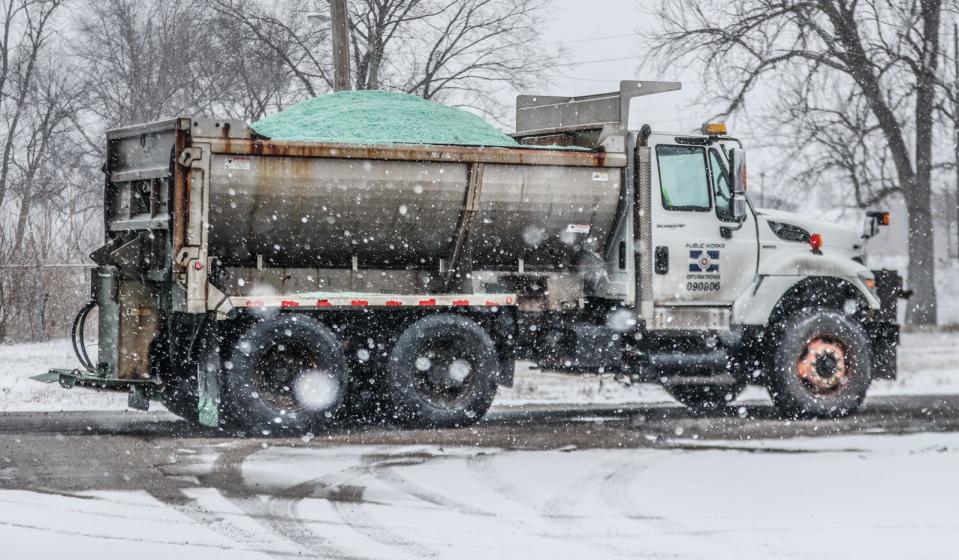
Salt has been used to de-ice roads in the U.S. for nearly a century, and its use across the country has tripled in the last 50 years. An estimate by the Cary Institute of Ecosystem Studies in New York found that more than 20 million tons of salt are poured on U.S. roads each winter.
For this edition of the Scrub Hub, we will be looking at whether road salts bad for the environment, and, if so, why?
To answer these questions, we looked at the research and spoke with the city of Indianapolis. Keep reading to learn more about the general impacts of salts as well as what the city’s Department of Public Works is doing on the issue.
Short answer: Salts contaminate wells and hurt wildlife
Most road salts are made from sodium chloride, which is the same chemical found in table salt. In fact, more than 40% of all salt consumed in the U.S. is used for highway de-icing, according to the U.S. Geological Survey in 2020.
The salts lower the freezing temperature of water, thus preventing snow from turning into ice and melting ice that is already there. So by its very nature, that means the salt can get washed away.
Scrub Hub: Why were dozens of trees cut down at Newfields' 100 Acres Park?
Salt in stormwater and runoff ends up – untreated – in nearby streams, rivers and lakes.
It reduces the oxygen levels in waterways, which makes it harder for fish, other aquatic animals and even plants to survive. The U.S. Environmental Protection Agency says that de-icing salts have killed or endangered wildlife in freshwater ecosystems and that the high chloride levels also can be toxic to fish, bugs and other amphibians.
Research estimates that as much as half of chlorides applied as road salt is carried to groundwater, and most of the chlorides in the shallow groundwater of urban areas likely comes from these salts
Once salt is in the waterway, it can remain for a very long time. There are really no biological processes to remove them unless they are washed away or diluted.
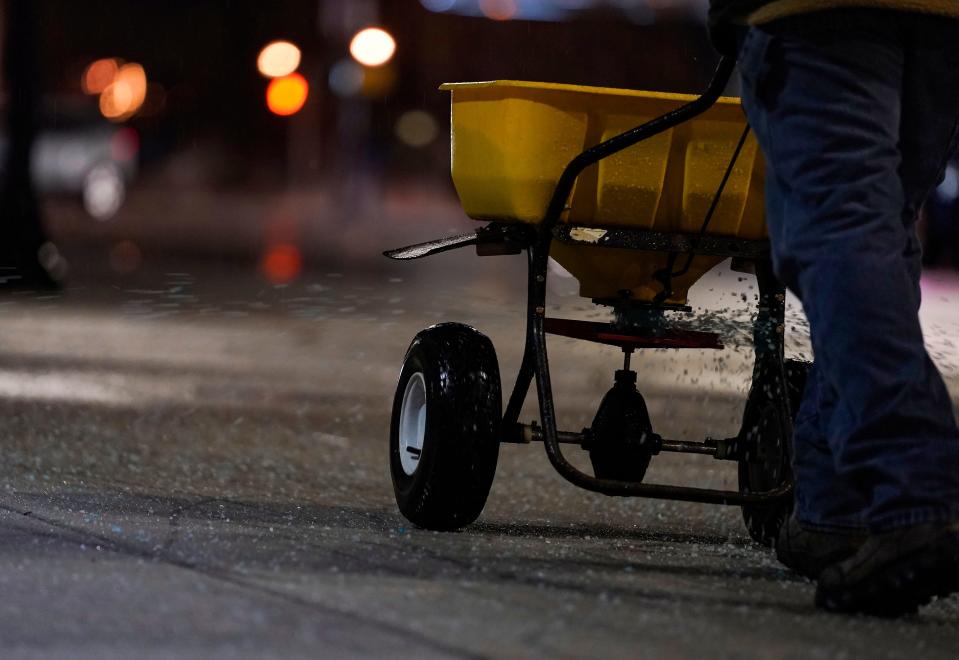
Road salts can also corrode vehicles and bridges, which EPA estimates leads to $5 billion in annual repairs across the country. And in some cases, road salts have contaminated drinking water reservoirs and wells. One study showed that de-icing salts are triggering big increases in freshwater salinity, which can harm people on low-sodium diets.
Long answer: Indy tries to keep waterways safe
The solution to the road salt problems isn’t necessarily straightforward, but Indianapolis is taking some steps to lessen potential harm.
In the average winter season, the city applies roughly 35,000 tons of salt to its roads. So far this season, they’ve applied about half of that since the beginning of November.
The city uses a specific type of de-icer that says it is anti-corrosive and more effective, thus making it better for the environment than and an alternative to traditional road salt.
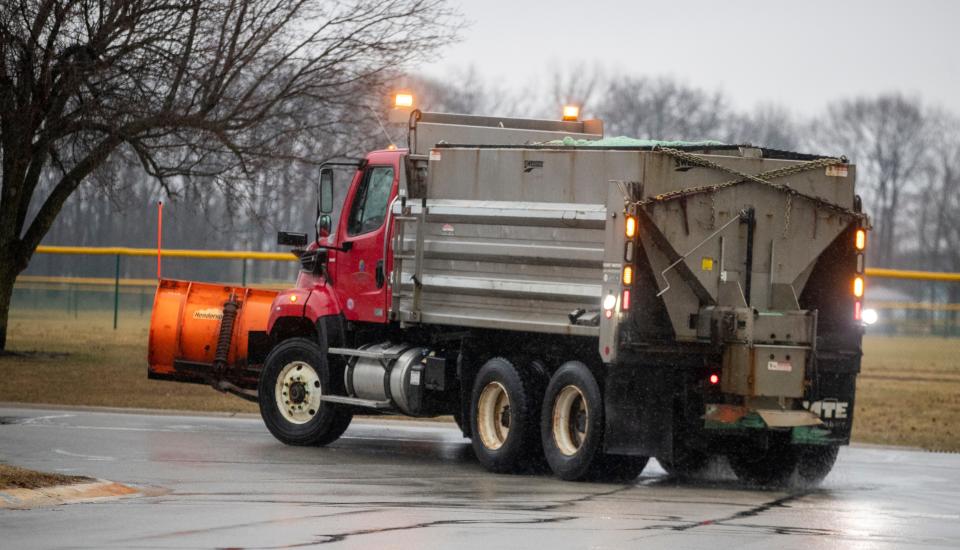
It does so because of a treatment that helps it adhere to the road surface better. When traditional salt is applied by trucks and hits the road, it bounces to the edge of the pavement. But tests show that 80% of the type of salt Indy uses stays within 18 inches of where it lands as opposed to about 50% of regular salt, according to the manufacturer.
That means less bounce and less scatter, which in turn means fewer applications, less product use and less getting into waterways.
“Both environmentally and pragmatically, Indy DPW certainly appreciates that this ‘salt’ material is specially formulated to more effectively stick on roadways and more effectively accomplish the goal of de-icing streets than traditional rock salt,” said Ben Easley, spokesman for Indy’s DPW. That means “we have to put down less material.”
The city also stores its de-icer in barns that are covered structures with no openings in the walls or roofs. The city’s best practices are not to overfill the barns and that the salt is pushed back into the barns and away from the doors. All of these steps are meant to prevent exposure to stormwater that can wash away the salt.
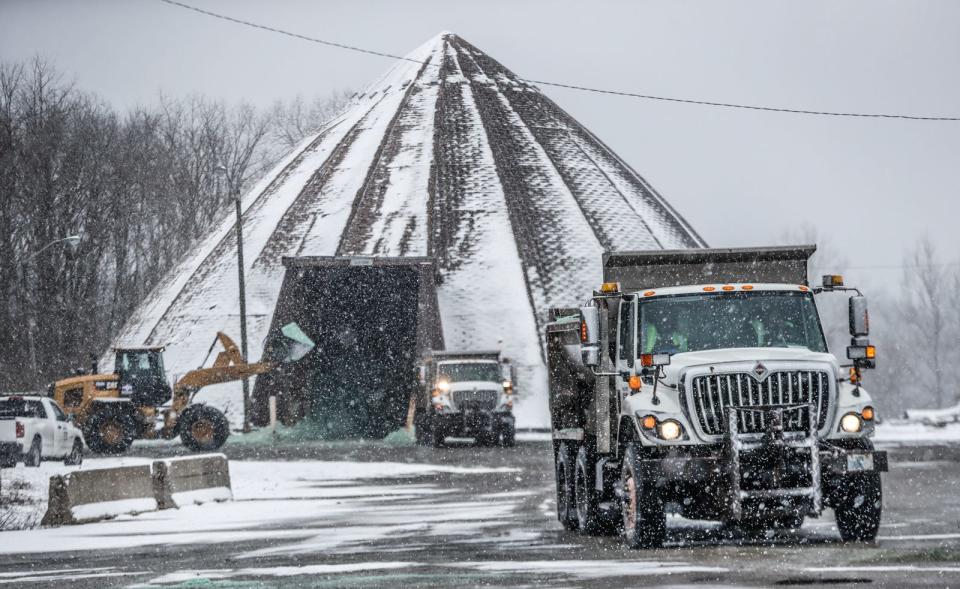
The storage structures are inspected regularly and the city currently is making significant investments in its barns, ranging from repairs to rehabs to full replacements.
These efforts are “to continue providing this protection against any future impacts to stormwater,” Easley said.
Loaded trucks are also stored under cover and the trucks are never washed outside, but rather in a bay that drains to the sanitary sewer. Trucks are also inspected regularly to ensure equipment is working properly so salt isn’t over-sprayed.
The snow season kicks off with annual training, according to Easley, which includes all salt truck drivers and includes these reminders and practices on salt management.
Bird flu: Virus hits third Indiana farm, more than 103,000 turkeys now killed
Great subscription offer: Check out this deal on IndyStar content
Still, the city is not the only group that provides snow and ice services in Indianapolis.
The city investigates businesses that do not properly store salt through its illicit discharge program. DPW also works with the Marion County Public Health Department to develop outreach materials for firms that plow and salt to reduce their impacts, too.
The city has a river monitoring program in which it tests quarterly for chlorides in the waterways. It watches these results as a potential indicator of the impacts of road salt usage in Indianapolis. Since the beginning of the program, however, it has never seen a high sample when road salt would have been a factor – “leading us to the initial conclusion that our de-icing material is not directly contributing to inappropriately high chloride levels in rivers,” Easley said.
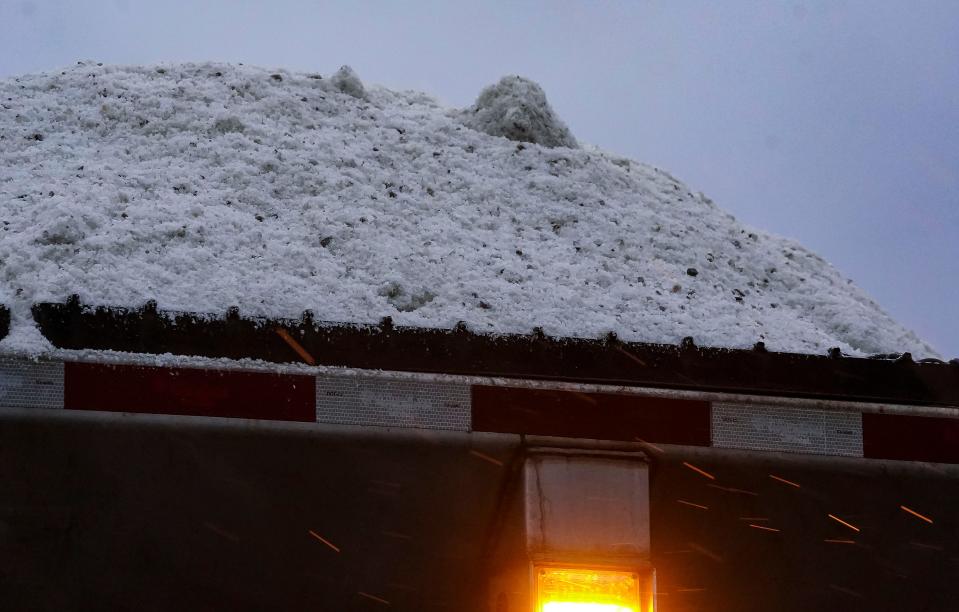
Every year the city reports to the Indiana Department of Environmental Management on a variety of different stormwater items, including the amount of salt used. The agency similarly has never expressed to the city concerns with the environmental impacts of its salt use, according to DPW.
Other places are also considering alternatives that can reduce salt usage. One of those methods involves treating roads before storms with a salt-brine liquid solution to prevent the ice from forming or bonding to surfaces. The Cary Institute said this treatment can reduce the amount of salt used while keeping roads just as safe.
Researchers say it comes down to how localities respond to winter weather and adjusting expectations on how to keep roads safe without hurting the environment, waterways and wildlife in the process.
If you have more questions about Indiana’s waterways, or any other topics, let us know! You can ask us by submitting a question through our Google form below.
Can’t see the form? Click here.
Call IndyStar reporter Sarah Bowman at 317-444-6129 or email at sarah.bowman@indystar.com. Follow her on Twitter and Facebook: @IndyStarSarah. Connect with IndyStar’s environmental reporters: Join The Scrub on Facebook.
IndyStar's environmental reporting project is made possible through the generous support of the nonprofit Nina Mason Pulliam Charitable Trust.
This article originally appeared on Indianapolis Star: Road salt can be dangerous for drinking water and wildlife

